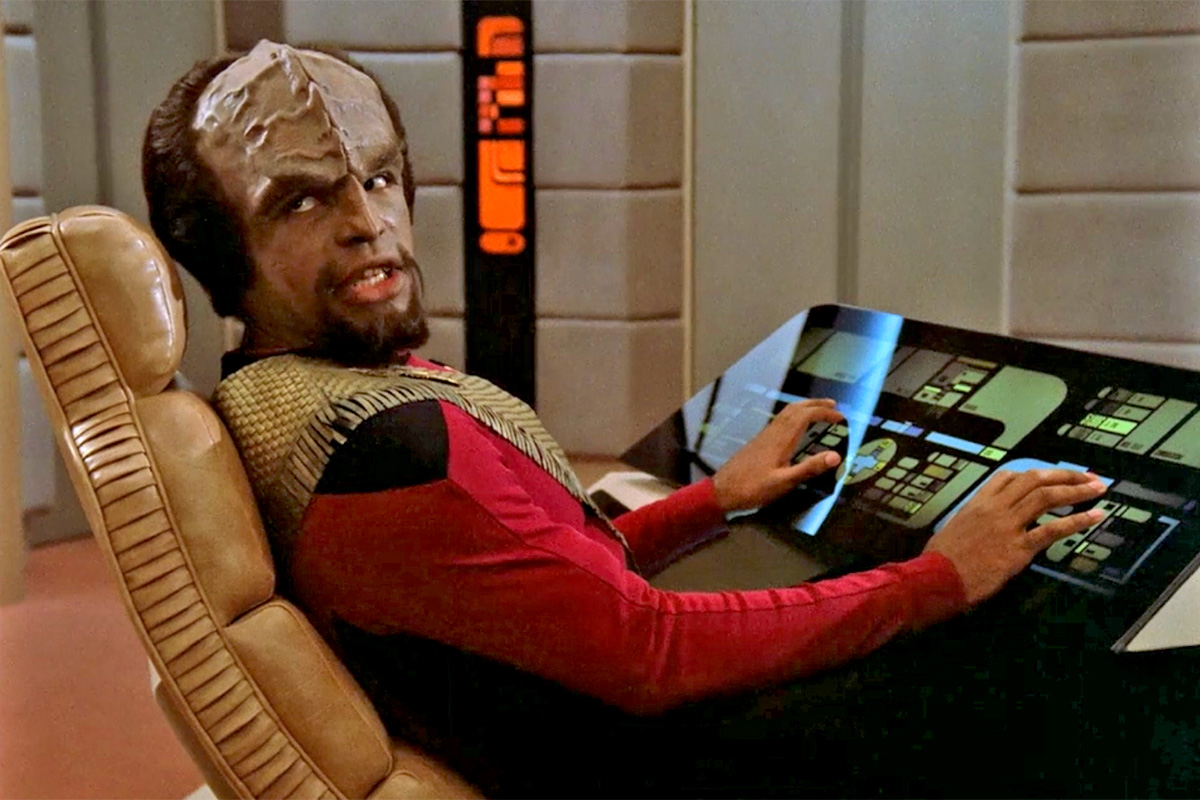This 'Star Trek'-Inspired Space Station Experiment Helps Scientists Study Earth
Assimilate this! A beloved "Star Trek" Klingon has inspired real-life science on board the International Space Station (ISS): A facility watching over Earth borrows its name from Klingon alien Worf, who is best known as the security chief on board the USS Enterprise starship in "Star Trek: The Next Generation" (TNG), which aired from 1987 to 1994.
A new NASA video reminds viewers of how Worf's name went into space in 2010. A NASA experiment, also called WORF (short for "Window Observational Research Facility"), flew to the ISS on space shuttle mission STS-131. WORF was spearheaded by Mario Runco, a recently retired NASA scientist and former astronaut on space shuttle missions STS-44, STS-54 and STS-77.
"After seeing our beautiful home planet from orbit, I wanted to be able to share the experience with everyone," Runco said in the video. [15 of the Most Bizarre Alien Species Featured in 'Star Trek']

WORF — the experiment, not the Klingon — is an apparatus that allows astronauts, or even remotely controlled payloads, to do Earth and space science research at a special Earth-facing window in the space station. The window, which is located on the U.S. Destiny Laboratory, is optimized for scientific investigations because the panes barely hinder the view when cameras look through it. WORF can accommodate up to three science experiments operating at this window.
According to NASA, WORF's capabilities include structural, power and data-transfer resources for several instruments. WORF also prevents condensation from forming inside the window, and it features a retractable "bump shield" that is supposed to stop loose hardware from banging against the window while the crew changes out instruments.
"The WORF's presence on the space station ... allows its sensors to image the same location or region multiple times over several days.," Runco said in the video. "This allows for observations that can show, for example, how vegetation below may be changing from day to day. Subtle changes detectable by orbital sensors, that might be indicative of declining plant health, are rarely visible on the ground in their early stages. And often, by the time they are, it is too late, and crops or even forests may be lost."
WORF has several other functions as well. It watches cyclones, eruptions and other temporary phenomena. It can also be equipped with sensors to study Earth's atmosphere, ocean and surface, Runco explained. If an astronaut is using WORF to take pictures or video, there are physical restraints to stop the astronauts from floating away while doing their work.
Breaking space news, the latest updates on rocket launches, skywatching events and more!
Runco and colleagues Dean Eppler and Karen Scott were inspired by "Star Trek" in their careers, Runco added, and that enthusiasm came through while they were designing the mission. Their mission patch includes Klingon script for the acronym WORF. There is also an alternate version of the patch with an astronaut who has an "uncanny resemblance" to the Vulcan scientist Spock on the original "Star Trek" series (1966-1969), Runco said.
The Trek character Worf, who was played by Michael Dorn, was one of the first Klingons on regular assignment with Starfleet, which is the fictional multiworld entity that explores the universe in "Star Trek." Klingons used to be enemies of Starfleet, so Worf had to overcome cultural barriers and distrust while fulfilling his work on TNG. Dorn's character was so popular that he continued playing Worf regularly in follow-on series "Star Trek: Deep Space Nine" (1993-1999), as well as several movies.
The NASA video was published around the same time that another TNG cast member announced a new show on CBS Television. Earlier this month, Patrick Stewart (who played Capt. Jean-Luc Picard) said he would return to CBS as Picard at a yet-to-be released date. Stewart's new show is part of a rush of new Trek content from CBS, which is producing the second season of "Star Trek: Discovery" for 2019 and is rumored to be pursuing multiple new Trek-themed shows.
Follow us @Spacedotcom, Facebook and Google+. Original article on Space.com.
Join our Space Forums to keep talking space on the latest missions, night sky and more! And if you have a news tip, correction or comment, let us know at: community@space.com.

Elizabeth Howell (she/her), Ph.D., was a staff writer in the spaceflight channel between 2022 and 2024 specializing in Canadian space news. She was contributing writer for Space.com for 10 years from 2012 to 2024. Elizabeth's reporting includes multiple exclusives with the White House, leading world coverage about a lost-and-found space tomato on the International Space Station, witnessing five human spaceflight launches on two continents, flying parabolic, working inside a spacesuit, and participating in a simulated Mars mission. Her latest book, "Why Am I Taller?" (ECW Press, 2022) is co-written with astronaut Dave Williams.
